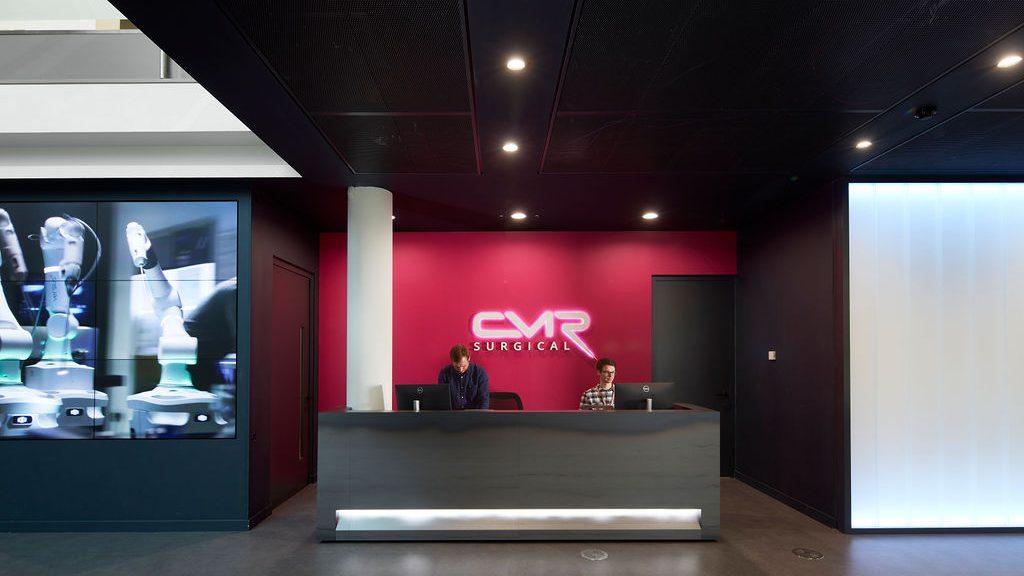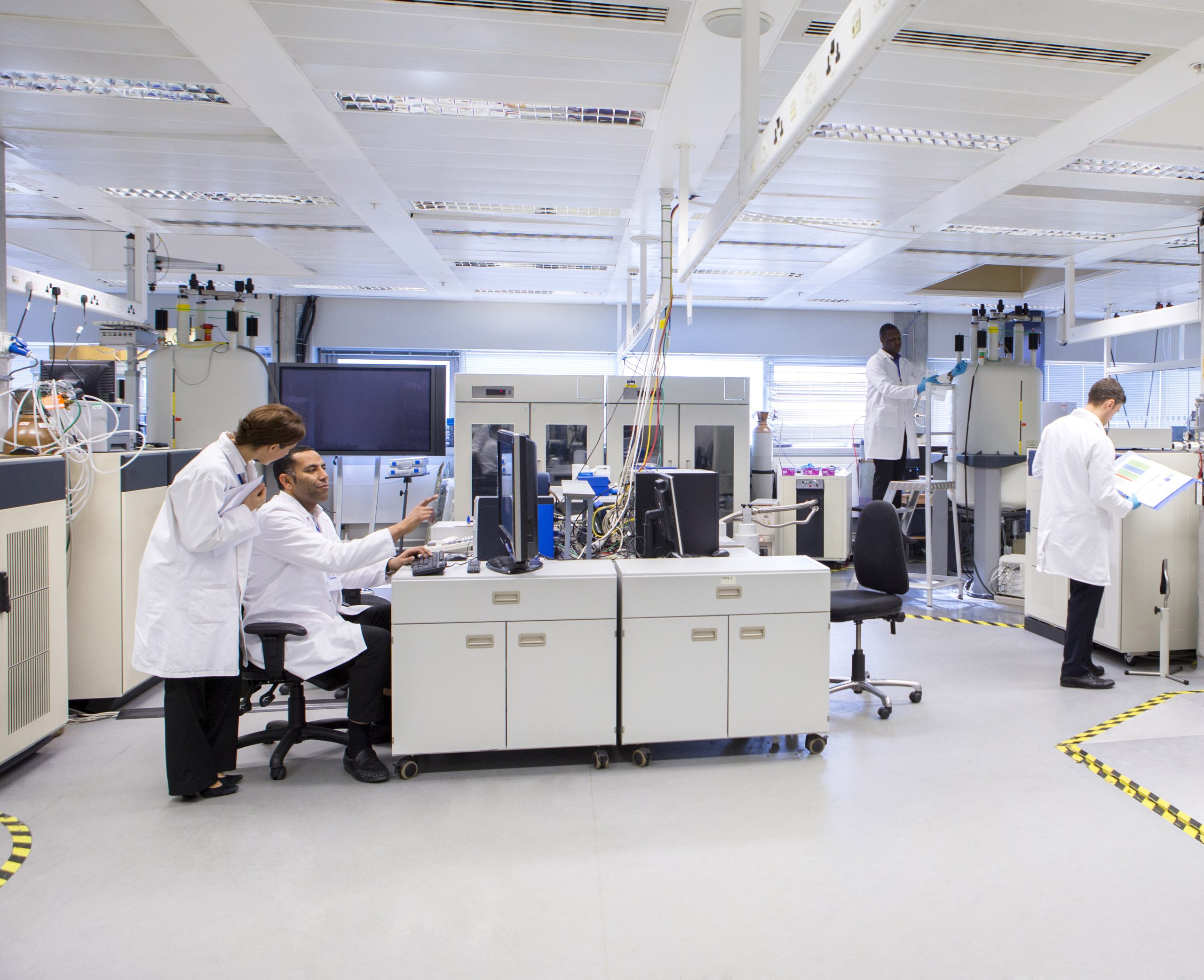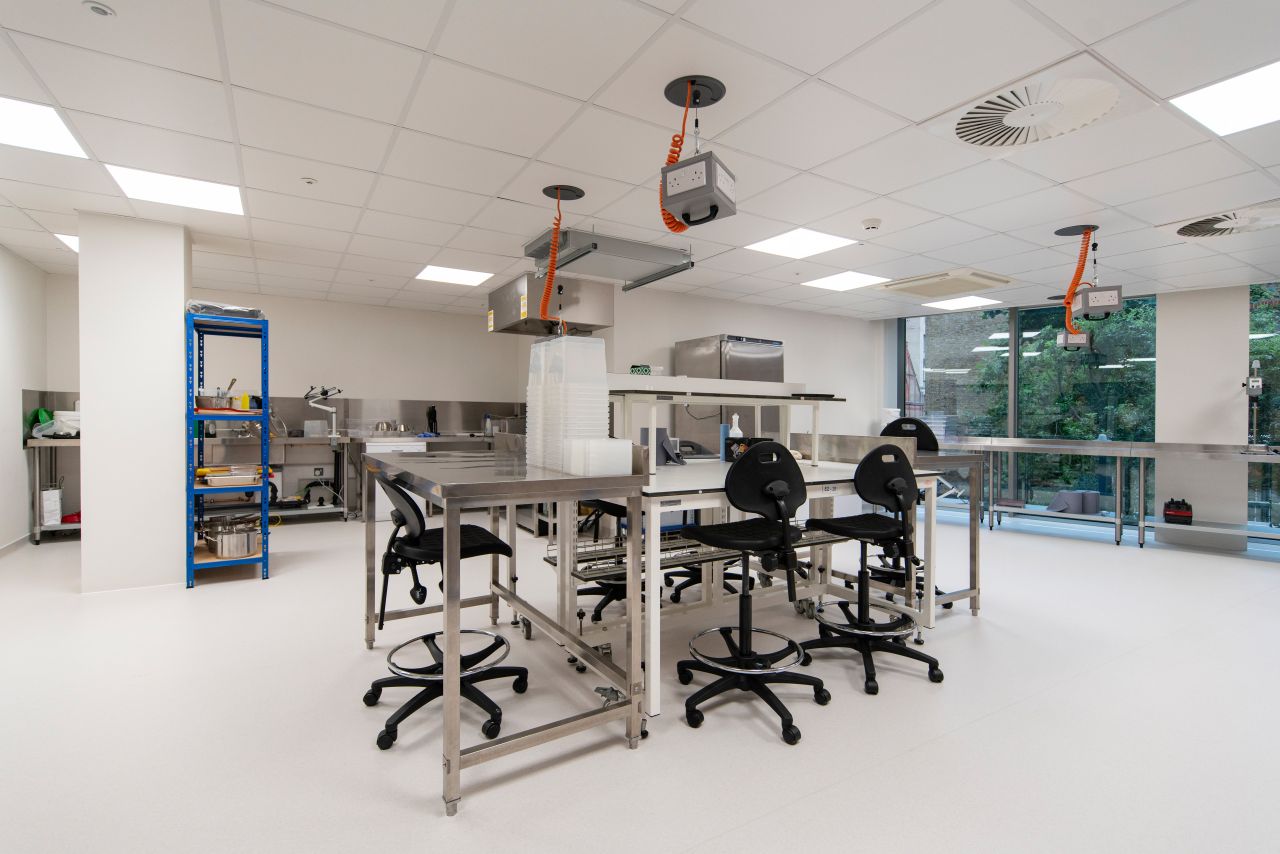Automation and robotic laboratory design: navigating future proof lab spaces
We explore automation and robotics laboratory design, shaping the next frontier of lab spaces.

The rise of laboratory automation and robotic laboratory design systems has caused a liberating transformation within the life science sector, freeing the scientist from their workbench and in turn increasing both productivity and efficiency.
Given the undeniable fast paced nature of the biotechnology, pharmaceutical, R&D and clinical industries, laboratory automation processes are righteously continuing to evolve. The transition to automation has provided many advantages that facilitate researchers within their everyday tasks. But with the development of automation showing no signs of hastening, the importance of a future proof lab to account for unimagined automated processes has never been greater.
Given their significant advantages, lab design must be capable of incorporating future automations. To achieve this, adaptability must be congenital from the outset of design and beyond.
The robotic laboratory design revolution
The range of automated equipment in a life sciences lab can vary from entirely autonomous systems to small instruments built for specific one-type only processes. This type of automated equipment includes auto sampling, auto titrators and cell imaging. Their purpose is to fulfil repetitive tasks such as labelling, sample transportation, data measurements and sample analysis.
An intrinsic function of liquid handling for example, involves the accurate measurement and dispense of liquid samples more widely referred to as ‘pipetting’. Pipettes abound in every life science laboratory, with their greatest threat to research being volume inconsistencies and sample contamination. Automated lab solutions replaced pipetting as early as 1950.With multichannel electronic pipettes taking over for time efficiency advantages and the entirely automatic liquid handlers relieving human interaction altogether.
As well as automated systems, recent technologies have seen other integrations of end-to-end robotics and artificial intelligence into laboratories to enable new and improved processes. As the throughput required continues to rise, innovation needs to match demands and instigate science that is leaps ahead of what used to be standardised practices.
Automation, robotics and AI are now firmly embedded within the industry and with good reason. A combination of humans and automated systems in the work environment has shown to be worthwhile, with human-robot teams said to be up to 85% more effective than a human only workforce.
Advancing beyond manual: the power of laboratory automation
The number of labs utilising automated solutions in everyday practice has increased exponentially. Incorporating automated systems into the lab provides more accurate and efficient research, enhanced productivity, reduced human error and increased traceability, as well as a whole breadth of other benefits:
Productivity and efficiency
Not only are the stagnant tasks handled by the precision and skill of mechanization, but lab workforces are also no longer tied down with repetitive tasks. This provides workers with the ability to utilize their time more efficiently and highly trained scientists can concentrate on higher value work which ultimately, streamlines the entire sector leading to greater outputs of scientific innovation.
Retention and business growth
The life sciences sector is quickly having to adapt to today’s fast changing hiring climate and increasingly seeking new ways to hire and retain top talent. Automated lab practices not only remove human responsibility, but by reducing menial tasks it can also increase job satisfaction and staff retention. Additionally it helps highlight that employers recognise everyday struggles of their lab staff and are willing to implement change for a better way of working.
Lab automation further allows for companies to keep up with capacity demands, whilst simultaneously increasing collaboration with Researchers.
Data accuracy
Automated systems are designed and built with the purpose of handling exact sample quantities. They take highly accurate recordings of data which generates research outcomes with increased reproducibility and uniformity. When compared to human interpretation, data evaluation via robotization is exceptionally accurate.
Designing laboratory workspaces that adapt with automation
The fast-paced nature of the industry and the development in innovative automated solutions reinforces the need to incorporate easily adaptable, flexible lab design. Adaptability is essential with modern lab design as it will reduce future requirements of renovation or location change. To be competitive, lab designers must be capable of facilitating adaptability in spaces to further automate the future lab.
Our experience tells us that optimising available space within a lab setting is essential for the integration of automated equipment. Given the limited expansion routes within the UK, the design of a lab must maximise any and all existing space efficiently This is done through optimized layouts, including modular equipment, structured use of vertical space and planning for reusable and repurposed furniture.
Given the increased use of automated procedures, designing with vibration control in mind is an important consideration in designing an adaptable lab. As well as this, utility upgrades and structural considerations may be required. For example, incorporating modular infrastructure, such as electrical and air services that are disconnected from work benches and instead suspended from the ceiling.

Preparing for laboratory automation
Asking whether a lab facility can feasibly accommodate new equipment now and in the future can identify how adaptable your lab space is. Pinpointing how your space measures against the top considerations within lab design that will help facilitate future automation.
Modular laboratory design
Modular design is a principle that allows you to subdivide your laboratory into smaller systems, each of which can be modified to be interchangeable with other systems. Elements include the use of moveable cupboard solutions, easily repositioned benchtops and tables and sets of plug-and-play quick connects.
The incorporation of modular design is imperative for a future-proof lab environment. Considered an investment into the future, modular design can allow your lab to respond to any potential changes, additions and removals at a relatively low cost.
Open and flexible laboratory layouts
Going hand in hand with modular design, opting for an open layout over a closed design will provide an easily adaptable lab space that can accommodate future automation equipment requirements. With fewer walls between lab spaces, mobile furniture can be more easily implemented into the space. Not only does this allow researchers to easily rearrange furniture to optimise their workflow, but it means integrating automation equipment as and when it is required or becomes available can be done with minimal adjustment to your lab floor plan and ultimately reduces potential refurbishment costs.
The reduced need to stay stationed at a work bench has catapulted collaborative space into the essential requirement category of lab design. Places to study, meet and share work collectively means that implementing collaborative interfaces as opposed to closed, self-contained labs are growing. Given the increased use of automated services, these collaborative spaces must be accounted for strategically. For a well-designed, future proof lab space the automated machinery is likely to exist separately to break out areas.
Activity based working in life science workplaces
Through the combination of more modular design and more open lab layouts the reduced need to stay stationed at a work bench has catapulted collaborative and flexible satellite office space into the essential requirement category of lab design. Our experience tells us that the increased production that automated activity brings to a lab requires additional office space to account for the analysis and processing of data. Much like the uprise in agile and activity based working throughout the wider workplace, integrating a variety of additional spaces to study, meet and share work collectively as opposed to closed, self-contained labs are growing.
The future is automation
Automated processes within the lab environment have now become standard practice within the life science sector, revolutionising the traditional lab into what we have today; a human-robot workforce built to maximise accuracy, productivity and efficiency.
Given the undeniable benefits of laboratory automation, modern day lab design must account for automated technologies. Are you interested in future-proofing your lab for automation with an adaptable design? Get in contact with one of our experts.

